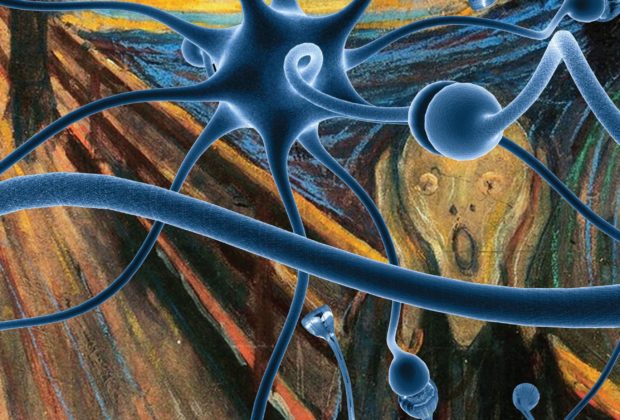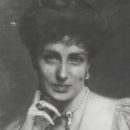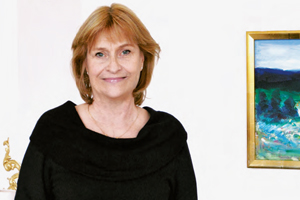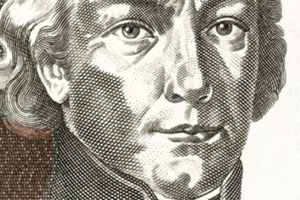
You don’t have to be mad to be a genious, but it helps
What is a genius’ ID? It is definitely not the weight of the brain – Marilyn Monroe had a physically bigger brain than Albert Einstein. The education? Not all Harvard or Cambridge students achieve greatness. On the other hand, insanity and genius seem to be happily linked together.
Geniuses are treated only with the risk of causing cultural damages’ (Simon Baron-Cohen) What would have become of a sedated Van Gogh, or an Elvis Presley whose paranoia could have been successfully treated, or a Hemingway without suicidal depressions? Is the genius mentality even possible without a collapse, a sharp edge between fame and psychological ruin? Associations between madness and genius are as old as western culture. Now, there are different types of genius for madness to be linked to:
Islander psychologists claim that families with a genetical history of mental illnesses produce on average a great deal of successful mathematicians. Another research of the Harvard psychologist Shelley Carson proves that ‘low levels of a latent inhibition and exceptional flexibility in thought predispose people to mental illness under some conditions and to creative accomplishments under others. Being overwhelmed with new information that you find difficult to handle may predispose you to a mental disorder but if you are intelligent enough, you are more likely to combine fragments of the new information in creative ways. Reveals distinctly higher rates of psychiatric conditions – most particularly mood disorders – among artists and writers.
In her 1993 study Touched With Fire: Manic-Depressive Illness And The Artistic Temperament, Kay Jamison concluded that among the distinguished artists she investigated, the rate of affective disorders was 10-30 times more prevalent than in the general population.
Nancy Andreasen, chair of psychiatry at the University of Iowa’s Carver College of Medicine, studied 30 authors from the university’s famous writers’ workshop and discerned that artists, though prone to emotional disorders, do not have high rates of schizophrenia – but their families do. The suggestion is that some features associated with schizophrenia, which haven’t developed into a psychosis, may confer some kind of creative originality. Hypomania (moderate levels of manic experience) can produce extraordinary periods of energy and concentration, followed by a plunge into depression. It may, in some people, confer benefits as well as deficits. The psychologist Hagop Akiskal from University of California points out that 8% of the people suffering of bipolar disorder are artists, a great deal compared to the norm.
As Wittgenstein said, reflecting on his own trials with mental illness: “If in life we are surrounded by death, so too in the health of our intellect we are surrounded by madness.” But, does anyone who once had a fantastic idea need to be a lunatic? Hardly. As fascinating as the infernal duo of genius and madness may be, there are brilliant people who have won the Nobel prize, the Pritzker prize, Bach prize or the Fashion Oscar without Gagaesque obsessions. So why is the portrait of a genius marked by craziness? The extraordinary coin connection has an extremely sexy effect: our brain seems attracted only too willingly to the double phenomenon of mental instability and important achievements. Eccentricity and Excellence are both above average and combined, their duo is unrivalled. As Peter Brugger said: ‘We notice the peculiar people , remember them more and we forget the normal.’
TO ART: Even Aristotle mentioned a tendency to melancholia in the artistic temperament; Shakespeare produced multiple variations on the theme of mad artists and Dryden coined the notion of a “thin partition” between wit and insanity. Primitivism, naive art, dadaism and surrealism all identify a realm of fantastic or unconscious disorder, but it was particularly in expressionism that the notion of the mad artist found its modern incarnation. The pioneers of expressionism were not all insane, but enough of them came close enough to keep the idea alive: Van Gogh cutting off his ear and reworking the world in psychotic strokes; Edvard Munch having a nervous breakdown in 1908; Max Beckmann being discharged from the army, traumatised, in 1915 and never really recovering. Crazy artists became such a stereotype, that in 1937, the Nazis put together an exhibition of “Degenerate Art” with the explicit aim of highlighting the shared inferior status of painters such as Paul Klee and Oskar Kokoschka with work by certified lunatics.
TO MUSIC: Beethoven’s contributions were monumental. His gradual descent into deafness from the age of 30 because of his father’s beatings is one of the most tragic aspects of his life. Nevertheless, he was able to compose some of his most esteemed work after losing his hearing. There was also his internal struggle, documented in letters to his brothers, where he discussed his flirtation with suicide, leading authors Hershman and Lieb to propose that Beethoven probably struggled with bipolar disorder. He had, indeed periods of intensity and vigour consistent with bipolar disorder.
TO ARCHITECTURE AND SCIENCE: Buckminster Fuller, an architect with sci-fi-esque visions of futuristic cities and cars, which he both designed, was also a bit of an eccentric. He infamously wore three watches to tell time in several time zones as he flew across the globe and spent years sleeping only two hours a night, which he dubbed Dymaxion sleep (he eventually gave it up because his colleagues couldn’t keep up with not sleeping). So, he also had plenty of time for chronicling his life. From 1915 to 1983, Fuller kept a detailed diary of his life that he updated religiously in 15-minute intervals. The resulting log, called the Dymaxion chronofiles, stacks 82 meters high and is exhibited at Stanford University.
TO PHYSICS: Robert Oppenheimer, “father of the atomic bomb”, was a polymath, fluent in 8 languages with interests in poetry, linguistics and philosophy. As a result, Oppenheimer sometimes had trouble understanding other people’s limitations. For example, in 1931 he asked a University of California Berkeley colleague Leo Nedelsky to prepare a lecture for him, noting that it would be easy because everything was in a book that Oppenheimer gave him. Later on, the colleague came back perplexed because the book was entirely in Dutch. Oppenheimer’s reaction? “But it’s such easy Dutch!”
TO FASHION: Coco Chanel was always fascinated by darkness. As a child she often played in graveyards and she was often spotted during her maturity, speaking with the dead between the graves. Moreover, she was always hunted by the monastery where she spent her youth and her designs carry as a result architectural and design models of the Abbey. However, nothing was ever confirmed as Chanel invented herself a different past of living with two aunts and a loving father who often visited her. It was only her imagination, but even she wasn’t sure which were lies and which not.
TO AVIATION: Howard Hughes Jr, played by Leonardo DiCaprio in The Aviator was at some point the richest man in the world. In 1938 he demonstrated that long distance air travel was possible and safe and he was also responsible for creating some of the greatest films of his decade, from ‘Hell’s Angels’ to the classic gangster movie ‘Scarface’. However, he was trapped by a crippling mental disorder that was only aggravated by his addiction to opiates which transformed him from a larger than life figure to a mad recluse. December 1947 represented Hughes’ most talked about episode. One morning he nonchalantly locked himself in a theatre viewing box for four months. He never came out for that time period and lived on a diet of milk and chocolate bars. He would reuse the milk bottles as he needed them and only communicated with his advisors through yellow legal sheets. Hughes would just sit there in the dark, naked, rearranging Kleenex boxes and watching movies. In the spring of next year he emerged bearded, filthy with long nails and an emaciated body. Now, it is known today that Howard Hughes suffered from an acute case of OCD, which was aggravated by his addiction to painkillers used by him because of his numerous plane crashes.
TO MATHEMATICS: The award-winning film “A Beautiful Mind” popularised the story of John Nash. Nash is a world-renowned, Noble-prize winner mathematician who struggled with paranoid schizophrenia after coming up with significant contributions to the concept of game theory. The U.S. Military even adopted tactics based off his ideas to use for the Cold War. But, as shown in the movie, he did experience hallucinations, including hearing voices and delusions. He began to have delusions of grandeur and believed that major world figures were out to get him. After his recovery, he explains: “One aspect of this is that rationality of thought imposes a limit on a person’s concept of his relation to the cosmos.”









